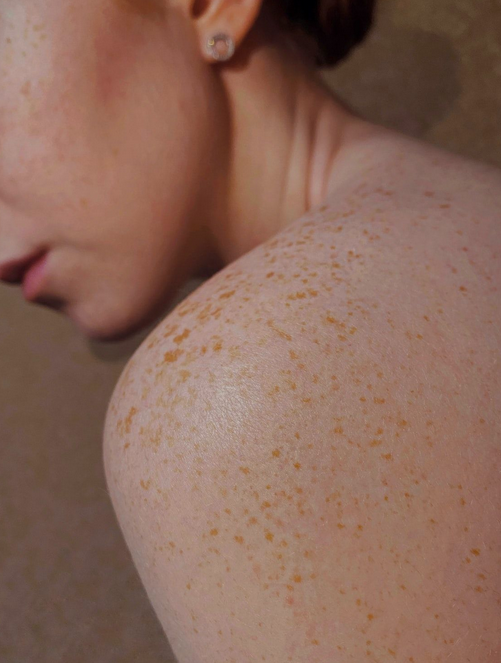BY ERIN CLARK RN, BSN
Top Washington DC Facial Plastic Surgeon shares her even-skin protocol.
One of the most common skincare concerns that we see in our office is facial skin discoloration, mostly skin darkening or hyperpigmentation. The hyperpigmentation can present itself as freckles or patches on the cheeks, forehead, upper lip, and/or mandible.
Melasma is a chronic disease that affects many women during their child bearing age. The cause of the disease is not fully understood but is thought to involve excessive exposure to UV light and visible light, familial predisposition, pregnancy, and exogenous hormone use. One needs to think of melasma as asthma or diabetes. Current treatment options work to diminish/suppress the skin hyperpigmentation. There is no cure for melasma. The condition tends to get better on its own after menopause. As someone with melasma, I am always looking for the latest treatment modality that is both safe and effective.
Post inflammatory hyperpigmentation (PIH) is another common complaint that we hear often from our patients. PIH is an acquired darkening of the skin following an acute inflammation of the skin as a result of acne or trauma. Treatment of PIH should start early and includes controlling the inflammation (i.e. acne treatment) and using bleaching agents to accelerate the hyperpigmentation.
Reapplication Of SPF Is Essential
Practice sun precautions daily, even during the winter. Physical sunscreens should be SPF 50+ and should contain active ingredients like zinc oxide, titanium dioxide to block UV light, and iron oxide to block visible light.
Try In-Office Microneedling
Microneedling with concurrent treatment with platelets rich plasma has shown good result in treating melasma without causing significant side effects. This combination treatment penetrates the skin deeper than at-home microneedling to improve skin tone and lighten hyperpigmentation in conjunction with sun precautions.
Add Key Ingredients
The most effective topical therapy for melasma includes the use of tretinoin, hydroquinone, and corticosteroid. Avoidance of excessive exposure to UV light and visible light is a must.


Leave a comment